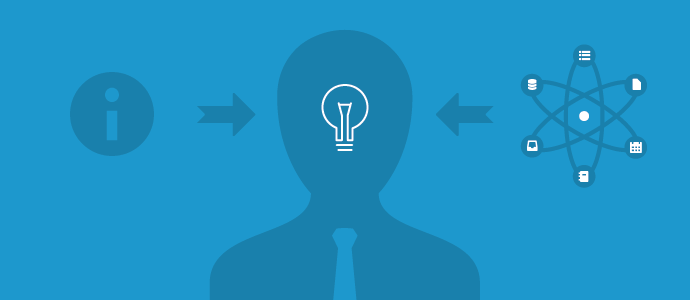This is the final part in our series on general-purpose BI versus purpose-built BI for sales.
I hope you've enjoyed my series on purpose-built BI for sales and how it's so much more valuable for enterprise sales teams than general purpose BI.
More importantly, I hope that you're excited about the forecasting and revenue value that predictive analytics promises for your sales team. Now you've got to convince everyone else. We live this stuff, so to help out, we've put together a few questions and concerns that we'e heard, along with responses. If we left out anything that will help you let us know and we'll give you the straight story.
"We already have Salesforce. Why isn't that all we need?"
Salesforce is an important system. But there are two problems with depending on Salesforce to help you forecast more accurately and drive more revenue. First, the data in Salesforce is missing, stale, or incomplete. We've all coaxed and threatened reps to keep Salesforce up to date. But it's extra work and time away from selling. And because reps tend to put off data entry until the end of the week—what we've heard called "The Sales Prevention Day"—it can be wrong or omit key details. BI for sales can reach out, with no effort by you or your reps, into the real sources of truth—email and calendar—to capture the rep activity that gives you the full picture and also feeds the data science engine. Salesforce just doesn't work that way.
Second, although Salesforce is a powerful database and reporting system and Salesforce Wave promises traditional BI-style analytics, it is not a predictive analytics system powered by advanced data science. The job of Salesforce is to tell you what happened yesterday. The job of predictive sales analytics is to tell you what will happen tomorrow. Only predictive analytics can answer questions like: Which deals will close? Is my rep speaking to the right decision maker? Is the customer engaged or checked out?
But it's not either/or. BI for sales uses all data you have in Salesforce as one data source, so it makes your Salesforce deployment more valuable.
Why can't I just add analytics to my BI tool?
Retrofitting a general purpose BI tool runs into issues in both "Collect" and "Analyze" (here is a refresher on the "Collect, Analyze, Act" capabilities that any BI for sales must deliver). First, BI tools were never designed for real-time reach into all the sources you need to understand the reality out in the field: CRM, email, calendar, and more. Second, it's not simple (we won't say impossible, but it's painful) to add advanced predictive analytics to a tool designed for reporting and aggregation. Usually what happens is you hire data scientists, pay them for 12 to 18 months of work, export data into yet another repository, and, eventually, buy a data visualization tool like Tableau to see the results. For a sales leader, purpose-built BI for sales delivers far more value, faster.
"Analytics is a waste. We just have to sell and can't control what the customer does."
Maybe you can't control if your customer goes with a competitor or waits another quarter before they purchase. But you can combine your experience with predictive analytics' insights and suggestions to improve the likelihood of closing your deals based on patterns pulled from your own won and lost deals. When you get a notification that a deal is stuck in a stage or a rep is missing a key milestone, you want to know yesterday. And when your team is heads-down on a deal that isn't on track to close this quarter, you can confidently double down on resources or push to next quarter and focus elsewhere.
"Are there privacy issues here with knowing so much about rep activity?"
The most important insight from email and calendar activity is not what the rep is doing—it's how engaged is the customer. Reps have meetings with customers. Reps trade emails with customers. Combine that two-way flow with advanced data science and you'll know relationship strength, customer interest, and whether a deal is on track or at risk. At the same time, reps tell us that they love it. They say that today they spend a frustrating amount of time inputting activity into the CRM and giving the play-by-play to their manager during 1:1s. They'd rather spend that time selling. And they know that selling is a team sport and consider emails to prospects part of the deal flow information that their entire team should be using to help them win!



